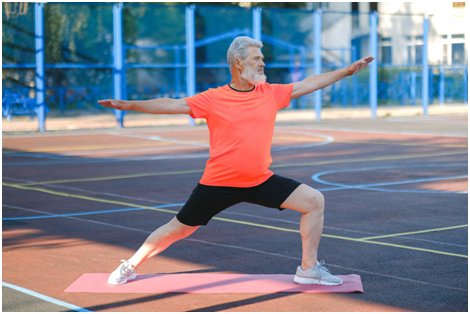Exercises That Help Protect Your Joints
Osteoarthritis develops as you age due to cumulative wear and tear on joints throughout your life. The pain can be debilitating, but you should not avoid physical activity because of it. Regular exercise helps to keep your joints strong, improve flexibility, and help prevent injuries. If you don’t have arthritis yet, adopting exercises that are healthier for your joints now may help you avoid symptoms in the future. If you do have arthritis, these exercises may help you stay active and reap all the health benefits without exacerbating your pain.
Swimming
Once you find out how good swimming is for your joints, you may end up wondering, “How can I find pool builders near me?” The buoyancy of the water supports your body, putting little to no impact on your joints. At the same time, the resistance of the water helps to strengthen and tone your muscles.
Low-Impact Aerobics
Aerobic exercise is designed to elevate your heart rate, which is good for your cardiovascular system. However, if you have joint problems, or are trying to avoid them, you should choose aerobics specially designed to be low-impact. Avoid activities such as running, jumping rope, or step aerobics as these put more pressure on your joints.
Active Stretching Exercises
Active stretching exercises are low-impact exercises that slowly take your body through its range of motion. Many grow out of Eastern traditions and may have an element of spirituality to them. However, you do not have to subscribe to any particular religious or philosophical beliefs to derive benefits from these activities. Examples of active stretching exercises include tai chi and yoga. They are not aerobic, but they still offer many health benefits, such as increased flexibility, if you practice them consistently. Some poses may be difficult to achieve, but there are often modifications available that allow you to gain the benefit without pushing your body into places that it cannot yet go.
Strength Training
Strengthening your muscles helps to make your joints more stable, reducing your risk of injuries from falls. It also helps burn calories and strengthen your bones because of the tension that the muscles put on them. Strength training also allows you to work out your upper body, which sometimes doesn’t get as much attention as it deserves from other workouts.
Cycling
A bicycle ride in the fresh air can be invigorating when the weather allows. Even when conditions are not favorable, indoor cycling can be performed at all times of the years. This is a great example of low-impact exercise because instead of your feet repeatedly pounding the ground, they go around in circles just over it to pump the pedals and make the wheels turn.
Some people tout the benefits of recumbent biking because it is largely non weight bearing. However, it can be difficult to find a recumbent bike, which allows you to pedal from a reclined position. If you do decide to ride a recumbent bike, remember that it is lower than other bicycles and should have a safety flag to alert motorists to your presence.
Elliptical Training
The fluid motion of elliptical training makes it ideal for people looking for a low-impact, full-body workout. The fluid motion of a stair machine is similar but doesn’t give as complete a workout because it doesn’t involve the upper body as much as the elliptical does.
Walking
Walking is one of the most popular forms of exercise, perhaps because of its simplicity. Apart from a pair of tennis shoes, you don’t need any special equipment to work out by walking. All you need is a stretch of road. Research shows that the benefits of walking are comparable to those of running without the strain that the latter puts on your joints. There are lots of ways to make a walking workout more challenging, such as using weights, choosing more hilly terrain, or increasing your pace. However, a leisurely stroll on a regular basis can still offer significant benefits as well.
If you develop joint trouble as you get older, remember that avoiding exercise altogether may make your symptoms worse. Instead, try to find ways to modify activities to protect your joints.































